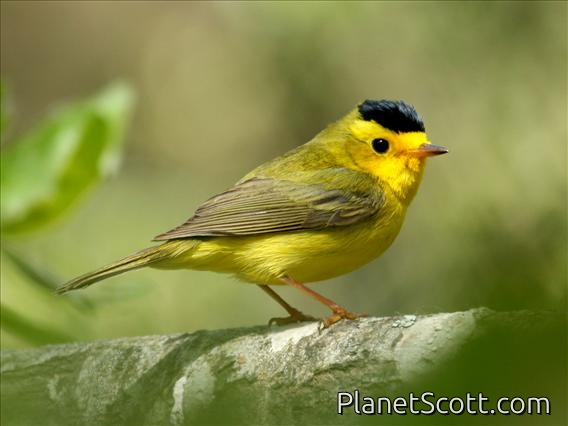Wilson's Warbler (Cardellina pusilla)

Wilson's Warbler (Wilsonia pusilla)
×


Wilson's Warbler (Wilsonia pusilla)
About Wilson's Warbler (Cardellina pusilla)
- Kingdom: Animals
- Phylum: Chordates
- Class: Birds
- Order: Perching Birds
- Family: New World Warblers
Wilson's warbler is a small New World warbler. It is greenish above and yellow below, with rounded wings and a long, slim tail. The male has a black crown patch; depending on the subspecies, that mark is reduced or absent in the female. It breeds across Canada and south through the western United States, and winters from Mexico south through much of Central America. It is a very rare vagrant to western Europe.
Source: Wikipedia
Trips
Visits
-
2006-06-10
Point Reyes National Seashore, United States of America -
2007-04-29
Lake Merced , United States of America -
-
-
2008-02-25
San Jose del Cabo - Estuary, Mexico -
2008-05-10
Broderick-Terry Duel Site, United States of America -
2009-01-25
Actun Tunichil Muknal Cave, Belize -
2009-01-30
Semuc Champey, Guatemala -
2009-02-03
Los Tarrales, Guatemala -
2009-02-06
Copan, Honduras -
2009-02-21
Reserva Monteverde, Costa Rica -
2009-04-05
East Wash, United States of America -
2010-02-16
El Rosario, Mexico -
-
2010-06-05
Denali National Park, United States of America -
2012-05-20
Pyramid Lake, United States of America -
2012-06-13
Mount Davidson, United States of America -
2014-03-09
Hahamongna Watershed Park, United States of America -
2014-03-10
San Simeon SP, United States of America -
2014-05-03
Glen Canyon Park, United States of America -
2014-05-09
Cave Creek Canyon--Southwestern Research Station, United States of America -
2014-05-09
Portal--Big Thicket, United States of America -
2014-05-10
Cave Creek Canyon--South Fork, United States of America -
2014-05-11
San Pedro RNCA--San Pedro House, United States of America -
2014-05-11
Miller Canyon, United States of America -
2014-06-15
Golden Gate Park - North Lake, United States of America -
-
2014-08-23
MacKerricher SP, United States of America -
2014-09-20
East Wash, United States of America -
-
-
-
-
-
2018-04-22
Big Bend National Park, United States of America -
-
-
-
-
-
-
-
-
-
-
-
-
-
-
-
-
-
-
-
-
-
-
-
-
-
-
-
-
-
-
-


